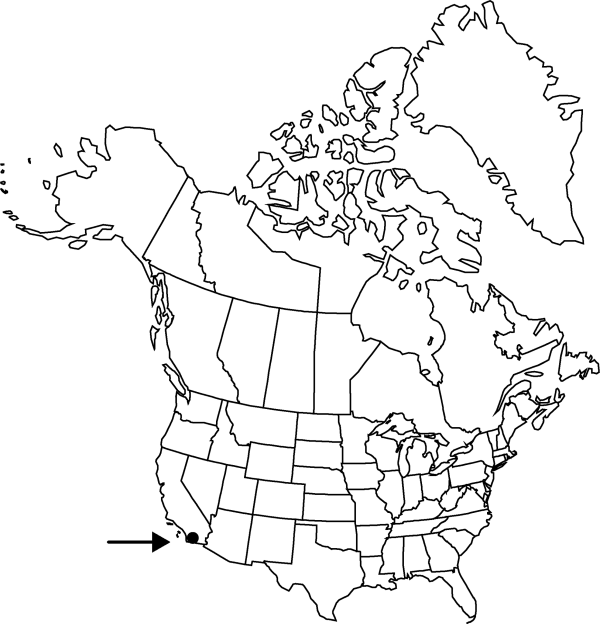Difference between revisions of "Mammillaria dioica"
Erythea 5: 115. 1897.
FNA>Volume Importer |
FNA>Volume Importer |
(No difference)
| |
Revision as of 22:23, 16 December 2019
Plants unbranched or branched; branches 0–50. Roots diffuse, upper portion not enlarged. Stems nearly spheric to more often cylindric or long cylindric, 5–30 × 5–7 cm, firm; tubercles 5–12 × 3–7 mm; axils woolly, bearing 4–15 bristles (0 in young growth) as long as tubercles; cortex and pith not mucilaginous; latex absent. Spines 14–26 per areole, pinkish or reddish brown to black, glabrous; radial spines 11–22 per areole, usually white, bristlelike, 5–7 mm, stiff; central spines (1–)3–4 per areole, abaxial 1 porrect, hooked, longer, stouter, adaxial central spines ascending with radial spines; subcentral spines 0. Flowers 10–22 mm; outermost tepals entire or short fringed; inner tepals cream, usually with pinkish or reddish midstripes, longer in bisexual flowers, 5.4 mm diam.; stigma lobes yellow to greenish yellow or brownish green, 8 mm. Fruits bright scarlet, clavate or ovoid, 10–25(–35) × 10 mm, juicy only in fruit walls; floral remnant persistent. Seeds black, 0.8 × 0.6 mm, pitted; testa hard; anticlinal cell walls straight (not undulate); interstices conspicuously wider than pit diameters; pits bowl-shaped. 2n = 66.
Phenology: Flowering spring (Mar–May); fruiting summer.
Habitat: California coastal scrub, Colorado subdivision of Sonoran desert scrub, rocky slopes
Elevation: 10-1500 m
Distribution

Calif., Mexico (Baja California).
Discussion
In an inland population in California, Mammillaria dioica was found to be functionally gynodioecious (F. R. Ganders and H. Kennedy 1978), with flowers of some plants bisexual while those of other individuals bear only functionally female flowers with sterile anthers. Coastal populations of the species were not studied and might be “trioecious” with staminate, pistillate, and bisexual flowers on different plants (B. D. Parfitt 1985).
Plants of Mammillaria dioica in Mexico are both tetraploid and hexaploid (M. A. T. Johnson 1978).
Selected References
None.